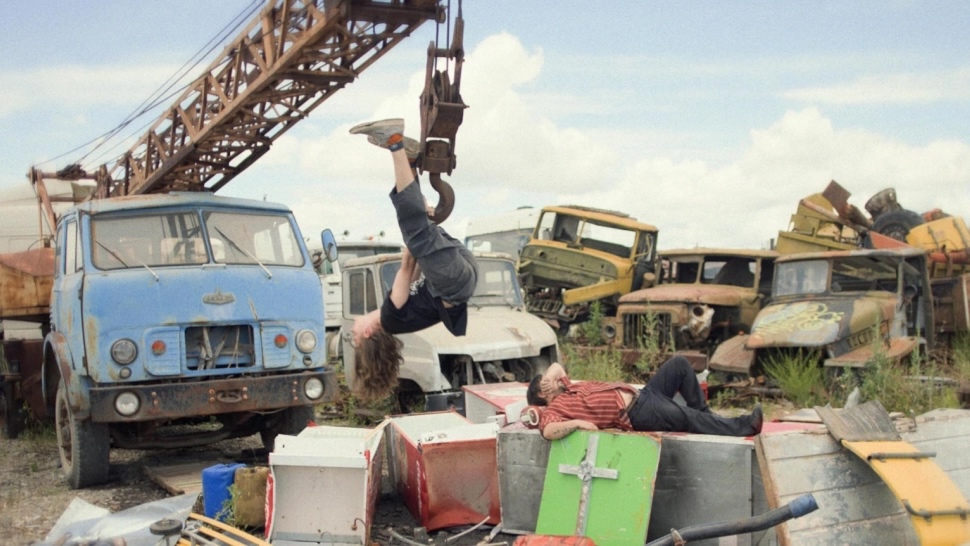There is an opportunity to turn everything into something beautiful in “Holy Electricity,” which starts with a funeral where there isn’t exactly a feeling of sadness in the air. It isn’t that there isn’t mourning – a collection of women surround a casket with their heads hung low, but it simply wouldn’t be the way in this Georgian community to wallow when life presses on, with a group of men coming in to quickly pick up the flowers around the deceased and the corpse carried out in short order.
The striking opening scene has even more resonance as time wears on in Tato Kotetishvili’s idiosyncratic yet compelling feature debut when it sets up far more than a storyline, concerning itself at least initially with the dead man’s cousin Bart (Nikolo Ghviniashvili) and Gonga (Nika Gongadze), the son he left behind with a promise to take care of the teen as if he was his own. But the introduction more subtly sneaks in a deeper but less obvious conflict when there is such a clear division between men and women in the cultural tradition of laying the dead to rest, one that “Holy Electricity” would seem to want to erase when living in the Eastern European country has required so much transformation over the years that being defined by whatever identity you’re born with seems silly when what you become is what matters.
For an international audience, “Holy Electricity” might remind of the last Georgian film to really make a splash abroad, Alexandre Koberdize’s “What Do We See When We Look at the Sky?” which transfixed with a wisp of a plot as a chance encounter between strangers led to an appreciation of the beauty to be found in every day life in the region. Kotetishvili has a little more concerted narrative in mind, but not much as he follows Gonga, largely given a personality with his Misfits T-shirt, and Bart into a junkyard, looking for useful objects – the latter resells such items on the street, but the former sees the opportunity to turn them into something new and decides to honor his late father by welding together a neon cross made of discarded scraps. When someone admires the glowing cross and wonders where to buy one when passing by the grave, the two have a chance to grow a little closer and put their respective skills to use, putting the crosses out for sale.
More actively a cinematographer than a director up to now, Kotetishvili has a clear eye for arresting imagery. “Holy Electricity” grabs you visually before it does narratively, abruptly ending its opening funeral scene with a concrete block dropped onto a car in the junkyard and a plot that sees its main duo head there to look for valuable materials and humble homes to sell them becomes an excuse to show off the wonders that hide in plain sight as the filmmaker lingers on scenes of an old man who can contort himself to fit in a small box and what looks like garbage can become magnificent monuments to all the life that’s yielded such leftovers.
But the film finds a focus in a capability of the society at an individual level to make the best out of what they’ve been bestowed without being beholden to it, with Gonga, who turns trash into treasure, among an array of locals who might not notice on their own how they’ve endured because of small inspired adaptations they’ve made in their lives, and it makes the increasing presence of trans characters particularly poignant as you wonder whether more general beliefs in the culture can adjust to the times. In a reflection of how messy change can be, “Holy Electricity” can be a bit all over the place at times, eventually transforming a bit itself with mixed results as the teen starts selling the crosses with a woman he meets selling coffee on the streets. Still, for a film so uninterested in binaries, Kotetishvili has made something singular in capturing such a vital and vibrant community.
“Holy Electricity” does not yet have U.S. distribution.




